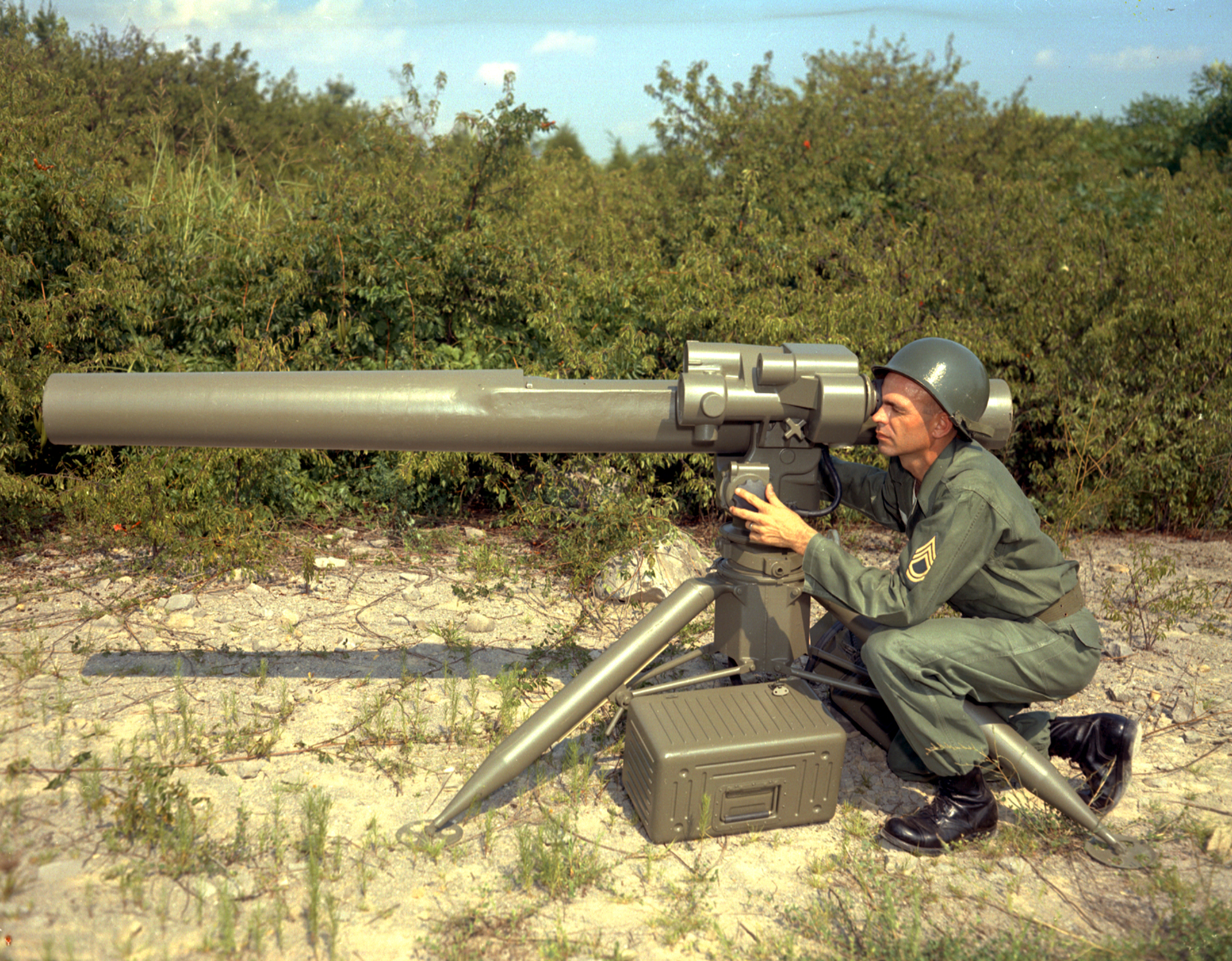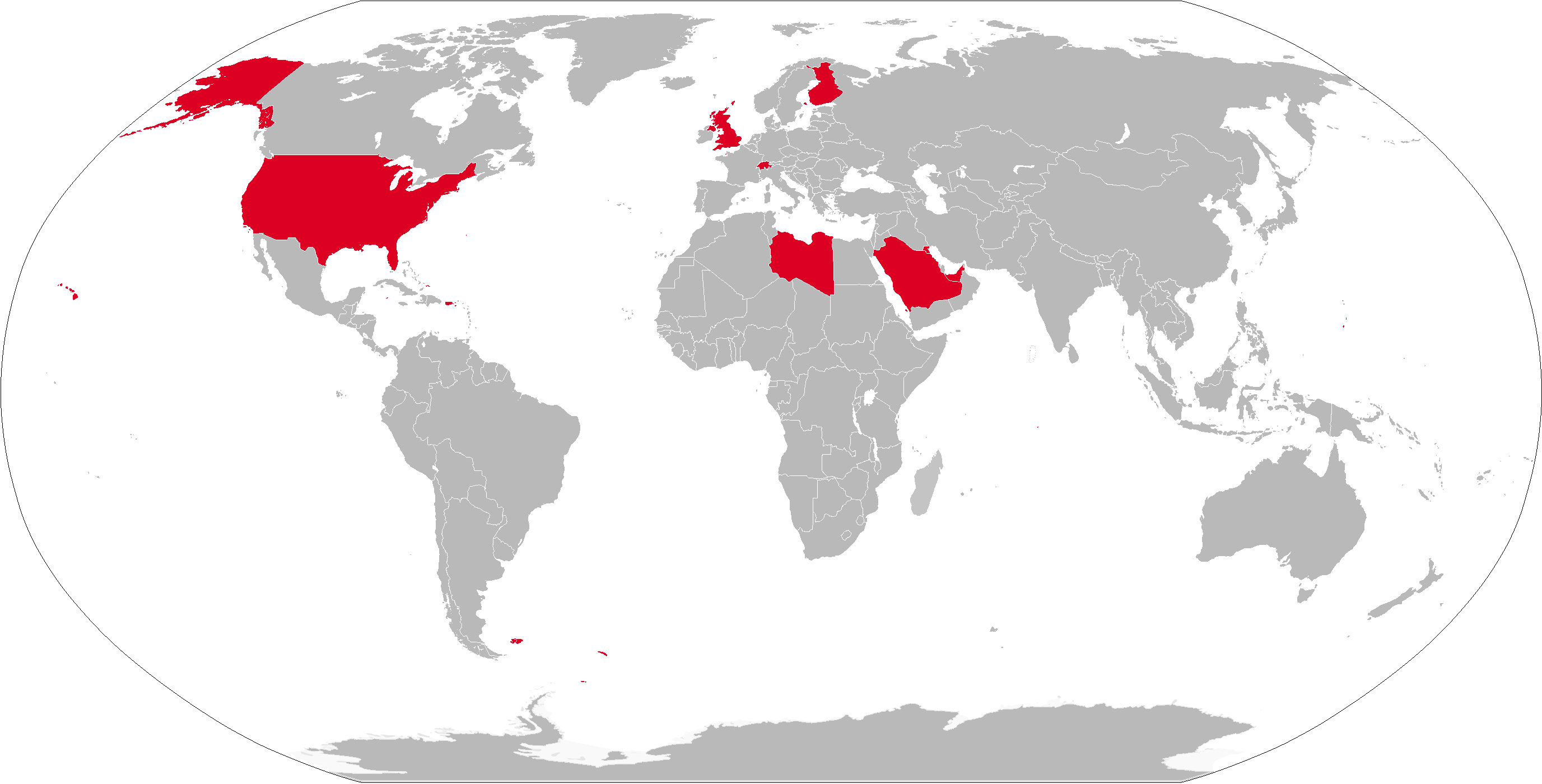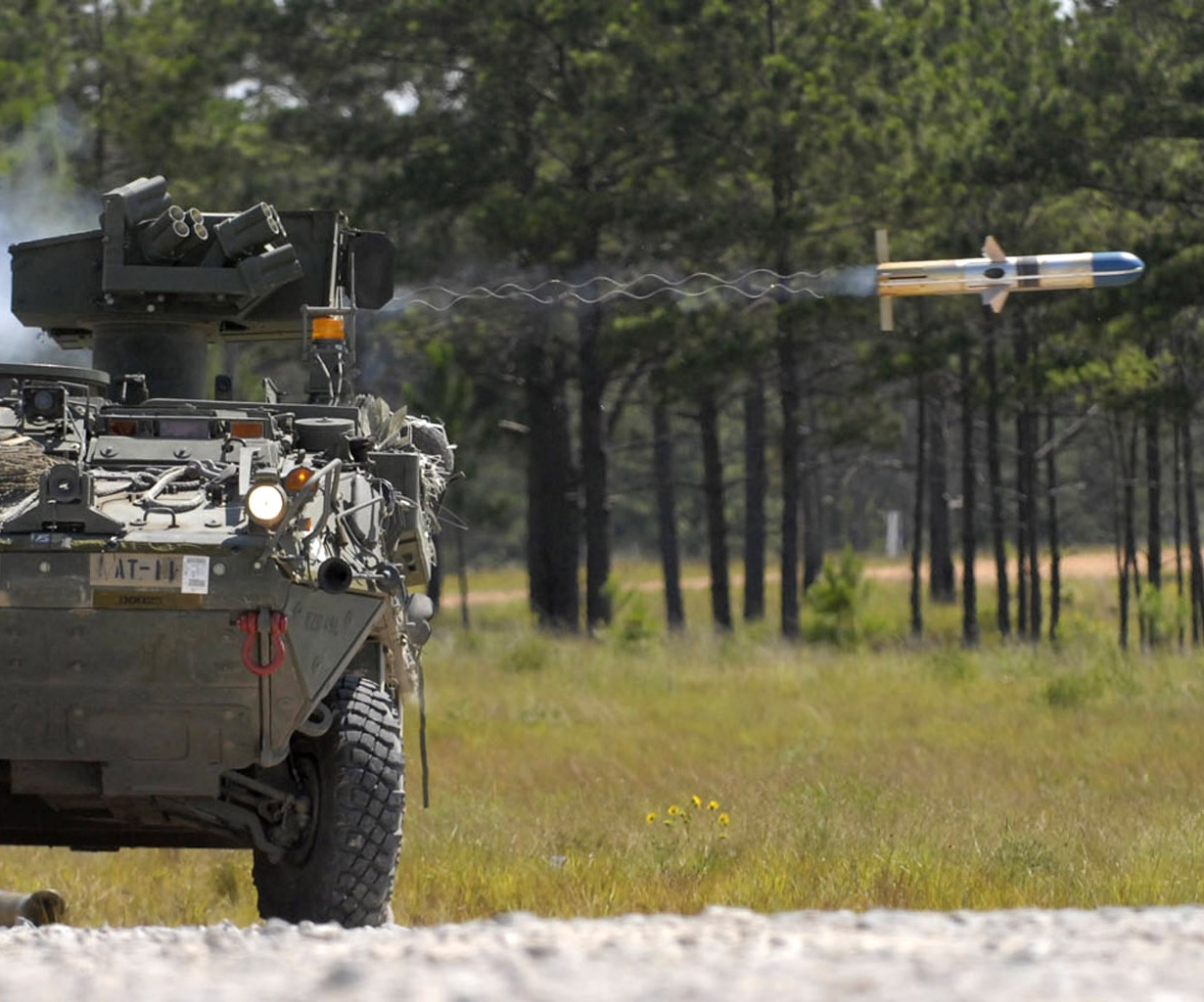|
Swingfire
Swingfire was a British wire-guided anti-tank missile developed in the 1960s and produced from 1966 until 1993. The name refers to its ability to make a rapid turn of up to ninety degrees after firing to bring it onto the line of the sighting mechanism. This means that the launcher vehicle could be concealed and the operator, using a portable sight, placed at a distance in a more advantageous firing position. Swingfire entered operational service in 1969 and underwent several major upgrades during its time in service. It was used on a number of vehicles including the FV438, FV102 and several truck mountings including the Land Rover. Concepts adapting it to helicopters, tanks and even hovercraft went nowhere. Swingfire remained in service on the FV102 Striker until 2005 when they were retired in favour of man-portable missiles. Development Earlier efforts The British Army was among the first to introduce a heavy anti-tank missile when they introduced the Malkara in 1958. The ... [...More Info...] [...Related Items...] OR: [Wikipedia] [Google] [Baidu] |
BGM-71 TOW
The BGM-71 TOW ("Tube-launched, Optically tracked, Wire-guided") is an American anti-tank missile. TOW replaced much smaller missiles like the SS.10 and ENTAC, offering roughly twice the effective range, a more powerful warhead, and a greatly improved semi-automatic command to line of sight (SACLOS) that could also be equipped with infrared cameras for night time use. First produced in 1970, TOW is one of the most widely used anti-tank guided missiles. It can be found in a wide variety of manually carried and vehicle-mounted forms, as well as widespread use on helicopters. Originally designed by Hughes Aircraft in the 1960s, the weapon is currently produced by Raytheon. History Previous designs Late in World War II, the German Army began experimenting with modified versions of the Ruhrstahl X-4 wire-guided missile. Originally developed for the ''Luftwaffe'' as an anti-bomber weapon, by changing the warhead to one using a high-explosive anti-tank (HEAT) design, the new X-7 v ... [...More Info...] [...Related Items...] OR: [Wikipedia] [Google] [Baidu] |
FV438 Swingfire
The FV438 Swingfire was an armoured anti-tank vehicle of the British Army. It was derived from the FV430 series of vehicles by converting the FV432 to accommodate a launcher for Swingfire anti-tank guided missiles. It had two firing bins and could carry fourteen missiles, which could be reloaded from inside the vehicle. Instead of using the mounted guidance system a control unit could be deployed and the missiles aimed and fired from up to 100 metres away, allowing the vehicle to remain completely hidden from the enemy; the Swingfire missile was capable of making a ninety-degree turn immediately after firing. When FV438s entered service in the 1970s, they were operated by specialised anti-tank units of the British Infantry and Royal Armoured Corps. In 1977, the anti-tank role was transferred to the Royal Artillery, which formed the FV438s into four independent Royal Horse Artillery batteries, one for each Armoured Division in the British Army of the Rhine. In 1984, the Royal ... [...More Info...] [...Related Items...] OR: [Wikipedia] [Google] [Baidu] |
FV102 Striker
The FV102 Striker was the anti-tank guided missile carrier in the CVR(T) family and served in the British Army. Overview FV102 Striker was the Swingfire wire-guided anti-tank missile carrying member of the CVR(T) family. The FV102 Striker was externally very similar to the FV103 Spartan but carried five missiles in a ready-to-fire bin at the back of the vehicle. Five reload missiles were carried in the vehicle. The bin was elevated to 35° (622mils) for firing. The targeting sight could be demounted and operated at a distance from the vehicle which could remain in cover, even completely screened as the missile can turn up to 90° after launch to come onto the target heading. The missiles were originally steered by joystick control using manual command to line of sight (MCLOS). This was later updated to the semi-automatic command to line of sight (SACLOS) system where the controller merely sights the target. Secondary armament was a general purpose machine gun. Development The ... [...More Info...] [...Related Items...] OR: [Wikipedia] [Google] [Baidu] |
Vickers Vigilant
The Vickers Vigilant was a British 1960s era MCLOS wire-guided anti-tank missile used by the British Army. It was also licence-built in the United States by Clevite for the US Marine Corps, and sometimes known as Clevite rounds in this case. It had a short service life, and replacement by the Swingfire began in the mid-1960s. History Vigilant was a private development begun in 1956 by Vickers-Armstrongs' Guided Weapons Department at Brooklands, Surrey for the anti-tank role in the British Army, the name being formed from ''VI''sually ''G''uided ''I''nfantry ''L''ight ''AN''ti-''T''ank missile. Vigilant was wire-guided, optically tracked and manually guided, like the missile it replaced in service, the Malkara. In contrast to that system, however, Vigilant included a more sophisticated guidance system that imparted changes in velocity that produced a much smoother and more predictable motion, whereas the Malkara was considered difficult to accurately guide. The same system was ... [...More Info...] [...Related Items...] OR: [Wikipedia] [Google] [Baidu] |
Orange William
Orange William was a British project to develop a long-range anti-tank missile as a possible alternative to the Malkara being developed in Australia. The project was drawn up in 1954 and the resulting contract won by Fairey Engineering in 1956. It was very similar to Malkara in form and layout, including the Malkara's distinctive square fuselage. It differed primarily in its guidance system (semi-automatic command to line of sight) and the use of an infrared command link replacing the Malkara's manual wire guidance. The name is a randomly selected "rainbow code". The initial contract called for testing in 1960 with a 1962 in-service date. Problems with the command link proved difficult to solve and later appeared to require outright replacement. The project was cancelled in September 1959 as it would not enter service before the Chieftain tank which was considered able to deal with any Soviet tank available. Malkara was purchased for its original intended use to give airborne i ... [...More Info...] [...Related Items...] OR: [Wikipedia] [Google] [Baidu] |
SACLOS
Semi-automatic command to line of sight (SACLOS) is a method of missile command guidance. In SACLOS, the operator has to continually point a sighting device at the target while the missile is in flight. Electronics in the sighting device and/or the missile then guide it to the target. Many SACLOS weapons are based on an infrared seeker aligned with the operator's gunsight or sighting telescope. The seeker tracks the missile, either the hot exhaust from its rocket motor or flares attached to the missile airframe, and measures the angle between the missile and the centerline of the operator's sights. This signal is sent to the missile, often using thin metal wires or a radio link, which causes it to steer back toward the center of the line-of-sight. Common examples of these weapons include the BGM-71 TOW wire-guided anti-tank guided missile (ATGM) and the Rapier radio-command surface-to-air missile (SAM). Another class of SACLOS weapons is based on the beam riding principle. In th ... [...More Info...] [...Related Items...] OR: [Wikipedia] [Google] [Baidu] |
Wire-guided Missile
A wire-guided missile is a missile that is guided by signals sent to it via thin wires connected between the missile and its guidance mechanism, which is located somewhere near the launch site. As the missile flies, the wires are reeled out behind it (command guidance). This guidance system is most commonly used in anti-tank missiles, where its ability to be used in areas of limited line-of-sight make it useful, while the range limit imposed by the length of the wire is not a serious concern. The longest range wire-guided missiles in current use are limited to about . History Electrical wire guidance dates back to the early 20th century with an early example being the Lay Torpedo. A prototype ground-based electrical wire-guided torpedo was built by the Germans during World War II. The pair of deployed German guided air-delivered ordnance designs, the Fritz X and Henschel Hs 293, both used the ''Kehl-Straßburg'' radio guidance system for control. However, because the Brit ... [...More Info...] [...Related Items...] OR: [Wikipedia] [Google] [Baidu] |
Thrust Vectoring
Thrust vectoring, also known as thrust vector control (TVC), is the ability of an aircraft, rocket, or other vehicle to manipulate the direction of the thrust from its engine(s) or motor(s) to control the attitude or angular velocity of the vehicle. In rocketry and ballistic missiles that fly outside the atmosphere, aerodynamic control surfaces are ineffective, so thrust vectoring is the primary means of attitude control. Exhaust vanes and gimbaled engines were used in the 1930s by Robert Goddard. For aircraft, the method was originally envisaged to provide upward vertical thrust as a means to give aircraft vertical (VTOL) or short (STOL) takeoff and landing ability. Subsequently, it was realized that using vectored thrust in combat situations enabled aircraft to perform various maneuvers not available to conventional-engined planes. To perform turns, aircraft that use no thrust vectoring must rely on aerodynamic control surfaces only, such as ailerons or elevator; aircraf ... [...More Info...] [...Related Items...] OR: [Wikipedia] [Google] [Baidu] |
NATO
The North Atlantic Treaty Organization (NATO, ; french: Organisation du traité de l'Atlantique nord, ), also called the North Atlantic Alliance, is an intergovernmental military alliance between 30 member states – 28 European and two North American. Established in the aftermath of World War II, the organization implemented the North Atlantic Treaty, signed in Washington, D.C., on 4 April 1949. NATO is a collective security system: its independent member states agree to defend each other against attacks by third parties. During the Cold War, NATO operated as a check on the perceived threat posed by the Soviet Union. The alliance remained in place after the dissolution of the Soviet Union and has been involved in military operations in the Balkans, the Middle East, South Asia, and Africa. The organization's motto is '' animus in consulendo liber'' (Latin for "a mind unfettered in deliberation"). NATO's main headquarters are located in Brussels, Belgium, while ... [...More Info...] [...Related Items...] OR: [Wikipedia] [Google] [Baidu] |
Berlin
Berlin ( , ) is the capital and List of cities in Germany by population, largest city of Germany by both area and population. Its 3.7 million inhabitants make it the European Union's List of cities in the European Union by population within city limits, most populous city, according to population within city limits. One of Germany's States of Germany, sixteen constituent states, Berlin is surrounded by the Brandenburg, State of Brandenburg and contiguous with Potsdam, Brandenburg's capital. Berlin's urban area, which has a population of around 4.5 million, is the second most populous urban area in Germany after the Ruhr. The Berlin/Brandenburg Metropolitan Region, Berlin-Brandenburg capital region has around 6.2 million inhabitants and is Metropolitan regions in Germany, Germany's third-largest metropolitan region after the Rhine-Ruhr and Frankfurt Rhine-Main, Rhine-Main regions. Berlin straddles the banks of the Spree (river), Spree, which flows into the Havel (a tributary of ... [...More Info...] [...Related Items...] OR: [Wikipedia] [Google] [Baidu] |
Warsaw Pact
The Warsaw Pact (WP) or Treaty of Warsaw, formally the Treaty of Friendship, Cooperation and Mutual Assistance, was a collective defense treaty signed in Warsaw, Poland, between the Soviet Union and seven other Eastern Bloc socialist republics of Central and Eastern Europe in May 1955, during the Cold War. The term "Warsaw Pact" commonly refers to both the treaty itself and its resultant defensive alliance, the Warsaw Treaty Organization (WTO). The Warsaw Pact was the military complement to the Council for Mutual Economic Assistance (Comecon), the regional economic organization for the socialist states of Central and Eastern Europe. The Warsaw Pact was created in reaction to the integration of West Germany into the North Atlantic Treaty Organization (NATO)"In reaction to West Germany's NATO accession, the Soviet Union and its Eastern European client states formed the Warsaw Pact in 1955." Citation from: in 1955 as per the London and Paris Conferences of 1954.The Warsaw ... [...More Info...] [...Related Items...] OR: [Wikipedia] [Google] [Baidu] |
Anti-tank Missile
An anti-tank guided missile (ATGM), anti-tank missile, anti-tank guided weapon (ATGW) or anti-armor guided weapon is a guided missile primarily designed to hit and destroy heavily armored military vehicles. ATGMs range in size from shoulder-launched weapons, which can be transported by a single soldier, to larger tripod-mounted weapons, which require a squad or team to transport and fire, to vehicle and aircraft mounted missile systems. Earlier man-portable anti-tank weapons like anti-tank rifles and magnetic anti-tank mines, generally had very short range, sometimes on the order of metres or tens of metres. Rocket-propelled high-explosive anti-tank (HEAT) systems appeared in World War II and extended range to the order of hundreds of metres, but accuracy was low and hitting targets at these ranges was largely a matter of luck. It was the combination of rocket propulsion and remote wire guidance that made the ATGM much more effective than these earlier weapons, and gave ... [...More Info...] [...Related Items...] OR: [Wikipedia] [Google] [Baidu] |








